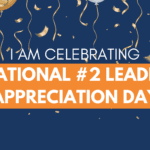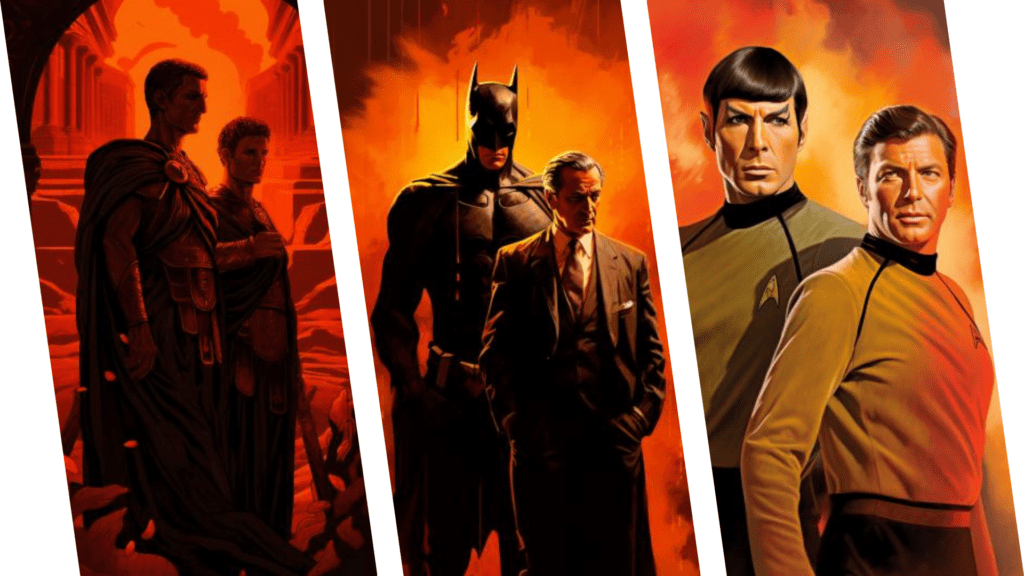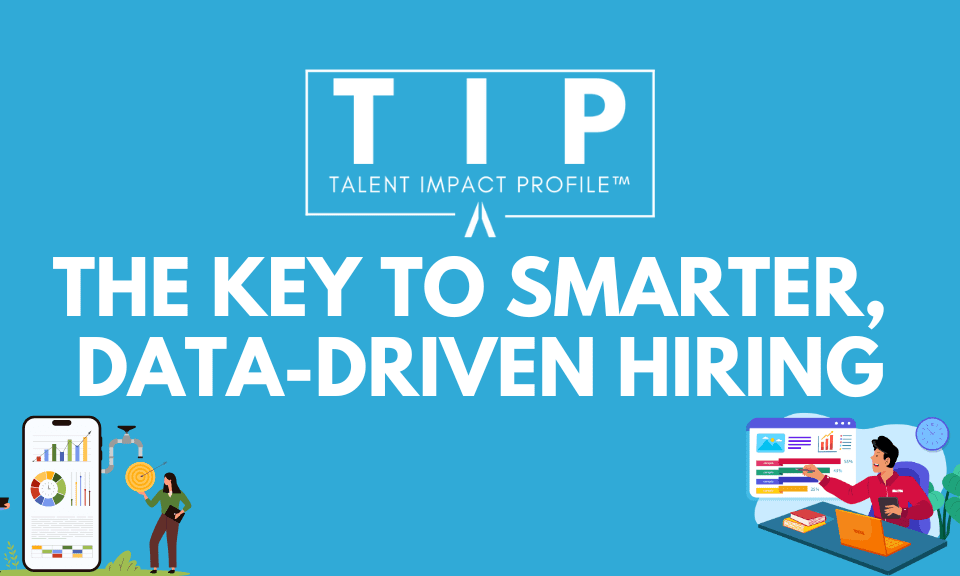
What Is An EOS® Integrator™
October 8, 2023
Number 2 Leader Appreciation Day
January 21, 2024What is a #2 Leader in Small Businesses?
What a #2 Leader Is:
The “go-to” person that the CEO can always rely on – their right-hand leader. The individual you think of or point to when something “has to get done.” They go by many names including COO, President, Integrator, Second in Command (2iC), VP of Operations, or even General Manager

Building a solid leadership team around the Owner/Founder is the groundwork for business success. When executive roles are defined and corporate hierarchy is developed, the #2 leader in business and the Owner/Founder can make magical things happen.
- A #2 Leader is someone who holds a position of significant authority and responsibility, just below the top leader (typically the owner or CEO) of an organization.
- A #2 Leader plays a crucial role in supporting and implementing the vision and strategies set by the top leader or Owner/Founder. They are accountable for the business’s profit and loss statement, as well as the business plan.
- A #2 Leader holds the rest of the team accountable and often serves as the tiebreaker for important business decisions.
The Definition of a #2 Leader
A #2 leader’s role is to carry out the owner’s big-picture goals through day-to-day responsibilities. #2 Leaders make tough decisions, support the owner, manage the team, and collaborate with key stakeholders to ensure business success. The #2 leader’s role is critical to the implementation of the business owner’s vision and direction.
What are the Key Responsibilities of a #2 Leader
Often considered the “right hand” to the CEO their role is charged with executive duties such as but not limited to:
- Overseeing, directing, and holding accountable the rest of the leadership team (Marketing, Sales, Finance, Administration, and Operations departments).
- The #2 Leader is often the glue that holds the organization together, ensuring that the business plan, vision, and goals of the entire organization are met.
Your Most Important Leader is Accountable to:
- Profit and loss (PnL) statement – Managing income and expenses and ensuring the financial viability of the company
- Systems – Aligning and developing key processes across the organization
- Leadership Team accountability – Holding the team accountable to quarterly and annual goals, the company’s core values, communication, and culture
- Operational management – Ensuring all employees are trained in the proper use of organizational tools
- Strategic planning – Assessing the current state of the organization, defining where it wants to go, and determining how to get there
Titles that Represent the #2 Leader
You may have heard the #2 Leader position referred to by other names. Some of them are more colloquial like “My Right Hand”, “They’ve been with me since the beginning”, or “Second in Command”. Sometimes it might be the co-founder or partner. But in general, one is looking forward, the other is looking to address the now. Some of these more traditional titles include:
Chief Operating Officer (COO)
The COO’s Role
The Chief Operating Officer in business, or COO, is responsible for operational strategy, process improvement, and team leadership. COO’s responsibilities ensure the smooth functioning of an organization and the translation of strategic objectives into actionable plans.
The Chief Operating Officer in business is also responsible for financial management, risk management, and technology and innovation. Like the #2 Leader, the COO acts as the right-hand person to the CEO and handles operational matters allowing the CEO to focus on broader strategic issues.
President
The President’s Role
When a company has a CEO in place, the #2 Leader is often compared to the President’s role in a company.
The President focuses on the day-to-day operations of a business and is typically the second in command. Unlike the CEO or business owner, the President is more focused on daily operations rather than the long-term strategy
The President provides executive leadership, operational oversight, financial management, and external relations with key stakeholders. They lead and manage the executive team, providing guidance and support to ensure alignment with organizational objectives.
General Manager
The General Manager’s Role
A #2 Leader may also be called a General Manager in business, as a General Manager is a senior executive responsible for overseeing the operations of a business.
General Manager responsibilities include operational leadership, strategic planning, operational management, and risk management. Depending on the organization, the General Manager in business may also be responsible for sales and marketing, quality control, performance monitoring, and vendor/supplier management.
Like the #2 Leader, a General Manager requires a combination of leadership, strategic thinking, and operational management skills. The General Manager runs the day-to-day business so the CEO can focus on more strategic objectives.
Vice President of Operations
Vice President of Operations Role
A #2 Leader is sometimes called the Vice President of Operations. The role of a VP of Operations may vary based on the industry, company size, and organizational structure, but they are typically the key position just below the CEO.
Like a #2 Leader, the VP of Operations duties include operational leadership, executive management, and process improvement. A senior-level executive, the VP of Operations is responsible for the day-to-day functions of the business.
EOS©️ Integrator
The EOS Integrator’s Role
What is an EOS Integrator? It is the #2 Leader in businesses running on the Entrepreneurial Operating System (EOS).
This role is responsible for directing, overseeing, and ensuring operational synergy. The Integrator reports to the Visionary, which is the CEO position in EOS companies. The Integrator is responsible for carrying out the vision, goals, and dreams the Visionary has for the business.
Like the #2 Leader, the EOS Integrator assumes the day-to-day responsibilities of the business so the Visionary has the freedom to focus on what they are best at and pursue other strategic directions for the company. If you’re curious about how to conduct an EOS Integrator Search for your business we’d be happy to explore that together.
Second in Command (2IC)
The Second in Command’s Role
The #2 Leader is referred to as the Second in Command, or 2IC, in businesses running on the Pinnacle Business Operating System.
The Second in Command’s role is to ensure operational synergy and oversee the daily business operations of the business. The Second in Command is a strategic thinker, a strong communicator, and is people and process-oriented. When a good second-in-command leader is in place, the CEO or owner can work ON the business instead of IN the business.
What is the Business Impact of an Effective #2 Leader
Strategic Vision vs. Operational Execution
An effective #2 Leader can provide a much-needed balance to the strategic vision of the company versus the operational execution of it.
- A #2 Leader handles the execution of the CEO’s plan and vision for the business on a daily basis.
- Remove the responsibility of the CEO to turn the big ideas into actionable items.
- Manage and lead day-to-day operations of the business. They’re the glue for the business that holds it together, operating consistently and smoothly.
It’s through the operational leadership brought to the organization from the #2 Leader that the CEO and the business turn dreams into reality.
The #2 Leader excels at operational excellence, by ensuring the processes and systems are working toward the strategic vision of the company.
We Hired Our #2 Leader Using the VisionSpark Method
The impact of effective #2 Leaders is evident in leadership case studies. VisionSpark has one of their own.
VisionSpark understands the importance of a #2 Leader and some of the pain points that prevent this important position from being hired. VisionSpark’s Founder, Alec Broadfoot, started the business from the ground up. Not ready to let go of the daily business operations, he put off hiring a #2 Leader for years.
He finally broke down and hired his #2 Leader, John Vidosh, in July of 2021. Alec talked about his experience hiring a #2 Leader during a conference breakout session in 2022.
This leadership case study underscores what can be achieved when a successful COO is hired. Alec speaks from a place of confidence when he shares that a good #2 Leader can build momentum and achieve future growth for the business.
Famous Examples of the #2 Leader in Action
Examples of #2 Leaders and their CEOs have played a significant part in business, history, and even entertainment. Famous examples of CEO’s and #2 Leaders include:
Steve Jobs and Tim Cook
Steve Jobs founded Apple in 1976 and Tim Cook became the senior vice president for worldwide operations in 1998. When Steve Jobs resigned in August of 2011 due to health reasons, he recommended Tim Cook, then Apple’s Chief Operating Officer, as his successor. While Jobs was known for his intense focus on design and product innovation, Cook is often praised for his operational expertise and supply chain management skills. This was a significant moment in their relationship, as Jobs expressed confidence in his #2 Leader, Cook’s ability to lead the company.
Fictional & Historical Duos That Highlight This Dynamic
Spock and Captain Kirk
In the Star Trek television series, Captain Kirk and Spock shared a deep and enduring friendship. Captain Kirk was the commanding officer of the starship USS Enterprise and his #2 Leader, Spock, served as the first officer, later becoming the science officer. The two worked closely together in leading the crew and navigating the challenges of space exploration.
Spock represented the “logical” side of leadership and was concerned with the practicality of the ideas. He was the “fact checker” and sometimes the roadblock to Captain Kirk’s sometimes outlandish plans.
Despite their occasional disagreements, Kirk and Spock had a deep mutual respect for each other’s abilities and perspectives. Kirk recognized Spock’s intelligence and competence, while Spock appreciated Kirk’s leadership and adaptability. They are another classic example of the crucial relationship between a CEO and the #2 Leader.
Caesar Augustus and Marcus Agrippa
The relationship between Caesar Augustus and Marcus Agrippa was one of history’s best examples of a visionary & right-hand leader. Marcus Agrippe served as a close friend, military general, and trusted advisor to Caesar Augustus. Their association played a significant role in the establishment and consolidation of the Roman Empire. Their relationship is the perfect historical example of what can be accomplished with a powerful CEO leader and a strong second in command.
Batman and Alfred
Alfred Pennyworth was Batman’s loyal butler. In reality, he served as a father figure, mentor, and confidant. While not the choice you might have expected Alfred, had many #2 Leader qualities – but the most important one was his ability to tell Bruce Wayne when he was wrong.
While most might think of Robin as his #2 Leader, Robin wasn’t a leader he was a sidekick. Alfred was trusted implicitly, with more than just a secret identity, but supporting the real person Bruce Wayne as well. Alfred was one of the very few individuals who knew Batman’s true identity and with whom Batman shared his innermost thoughts and struggles. This depth of relationship is an example of the important bond between the CEO and the #2 Leader.
How to Hire the Right #2 Leader: A Science-Based Approach
Go Beyond Gut Feelings and Loyalty
When deciding who to hire and how to hire your most trusted employee, don’t make a hiring decision based on gut feeling or loyalty.
- Hiring the wrong person at a $100k (or more) salary can equate to a $1.5 million loss and 300 hours of lost work time.
It’s important to use data-driven methods in hiring for this role.
Data-driven recruitment has become a pivotal aspect of the hiring process. Finding the right leader for your organization deserves a data-driven approach. Use measurement tools, science-based assessments, and benchmarking data to make informed decisions.
Employing comprehensive hiring strategies that incorporate data-driven insights enhances the likelihood of identifying and securing a solid #2 Leader.
Assessing Skills and Fit for Your Future Second in Command
Step One: Skill Assessments
These play a critical role in the hiring and selection of a #2 Leader. Instead of assuming they have the right skills, use an objective and structured approach to evaluating a candidate’s capabilities and expertise.
Step Two: Culture Fit
Assessing cultural fit is equally important to aligning #2 Leader candidates with the company values and the culture of the team.
“Most CEOs and Owners are passionate about preserving the culture they’ve worked so hard to build. For too many leaders it feels impossible to bring someone from the outside who “get it”. We have completed over 150 of these #2 Leader hires and found that culture fit is something that be found from the outside”
-Alec Broadfoot, CEO VisionSpark
Step Three: Leadership
Your #2 Leader will carry a lot of responsibility. And their Leadership skills have to be at the level to develop and hold accountable other executives. A leadership evaluation verifies the right skills but also has previously demonstrated the leadership qualities essential to building great teams.
VisionSpark recommends assessing #2 Leader skills and culture by using the VisionSpark assessment.
The VisionSpark assessment answers 3 critical questions. They are:
- “Do I have the right person in the right seat?”
- “How do I know what questions to ask?”
- “Should I hire this person?”
The VisionSpark assessment measures mental aptitudes and personality dimensions to determine if your candidate can be the right fit.
Internal vs. External Hiring of the “Right-Hand” Leader
The decision to hire internally or externally is one that organizations need to carefully consider.
Internal promotion involves moving existing employees into new roles and providing an opportunity for career growth within the company. This approach fosters loyalty, leverages existing company knowledge, and can boost morale among current team members.
External recruitment introduces new skill sets, different perspectives, and outside experiences into the workplace.
The leadership hiring decision for a #2 Leader depends on the specific requirements of the role, and if an internal candidate has the skills and potential to meet the demands of the role.
Conclusion: What is a #2 Leader, Their Impact, and Finding the Right One
The #2 Leader plays a pivotal role in the business’s success. It does not matter what your organization calls the #2 Leader role the COO, President, General Manager, Vice President of Operations, EOS Integrator, or Second in Command, the #2 Leader carries out the day-to-day operations of the business so the CEO/Owner can focus on the big picture responsibilities.
The relationship between the #2 Leader and the CEO is key. They must work closely together to ensure the CEO’s overall goals are being met. This requires collaboration, communication, and leadership from both positions.
We’ve witnessed the #2 Leader and CEO relationships in businesses, in history, and in the entertainment industry, for generations. These relationships are key to achieving whatever goals are in mind – from growing a business to defeating an empire or saving the world from the evil enemy on Earth or in space.
Your #2 Leader hire requires:
- A strategic approach and vetting process
- A comprehensive interview
- A data-driven skills assessment that identifies skill match and culture fit.
Are you considering hiring a #2 Leader for your business? We’ve been there, and we get it.
We’ve helped businesses just like yours hire a #2 Leader who was a game changer for their business. We understand your challenge and can empathize with your feelings. Businesses in these situations are why we started VisionSpark. We KNOW that with a little push from an experienced hiring expert, you can find the freedom that a great leader offers.
Contact us today and let’s schedule a discovery call to hire your #2 Leader.





